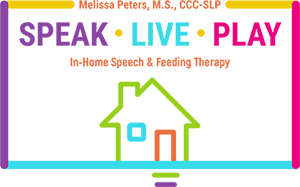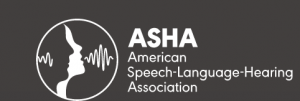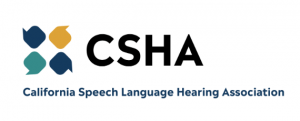Speech Sound Disorders – Articulation and Phonological disorders
Do you have trouble understanding your kid’s speech? If you find your kid saying “Rub” instead of “run” or “wabbit” instead of “rabbit,” your child may have articulation disorders. Articulation disorder is a condition when your kid is not able to make certain sounds. The child may always replace the letters “r” with w” or “th” with “s.” A speech-language pathologist (SLP) can help in diagnosing and treatment of speech sound disorders and assist your kid in communicating clearly.
What is an articulation disorder?
In most instances, the kids outgrow substituting or replacing the sound by the time they are 5 to 6 years. However, if your kid still has a pronunciation problem past this age, they may require speech therapy. Articulation disorder is an everyday speech sound disorder that involves issues when producing specific speech sounds.
Articulation is a process that humans go through to enable them to produce sounds, syllables, and words. Kids with articulation problems have issues when producing sounds or forming specific sounds. Articulation disorder makes the speech hard to understand and may affect the kids’ learning and socialization.
What is speech sound disorder?
Speech sound disorders are a broad umbrella that refers to difficulties relating to motor production, perception, speech segments, and phonological representation of speech. Generally, speech disorders are functional or organic. The organic speech sound disorder arises due to an underlying neurological/motor, sensory or structural cause. Good examples of speech sound disorders arising from neurological or motor disorders include dysarthria and apraxia of speech. Structural deficits can arise from cleft lip or sensory disorders such as hearing loss.
Functional speech disorders do not have a known cause. They include articulation disorders that focus on errors such as substitution and distortion of speech sounds. The phonological disorders focus more on predictable rule-based errors such as stopping, fronting, or final consonant deflection affecting more than one sound.
What is the difference between articulations vs. phonological disorder?
Phonological and articulation disorders are similar, making them easy to confuse. However, it is crucial to differentiate the two since their treatments are not the same. Kids with articulation problems have an issue with the motor functions needed to make certain speech sounds. These kids are not able to coordinate their lips, teeth, tongue, palate, and lungs when producing specific sounds.
The child forms distorted speech sounds and sometimes swaps out the sound they are not able to make. Kids with an articulation disorder may have an issue forming the sound “th” and instead replace it with an “f.”
When it comes to phonological disorders, the kid can produce the sounds correctly but has issues when putting the sounds together. An excellent example is where your kid can make the “r” sound independently. However, whenever the kid tries saying a word starting with “r,” they often swap it with a “w.”
- Causes
While the leading cause of articulation disorder is not yet established, experts in this field are investing in the following risk factors. - Gender
Research shows that speech sound disorders incidences are higher in boys than in girls are - Pre- and perinatal problems
Various factors such as infection during pregnancy, maternal stress, delivery complications, low birthweight, and preterm delivery issues are also associated with speech sound disorders. - Family history
Kids with family members with language or speech problems are also likely to have a speech disorder. - Persistent otitis media with effusion
Persistent otitis media with effusion, which is associated with a hearing problem, can also lead to delayed or imparted speech development.
Roles and Responsibilities of Speech -language pathologists in managing and treating speech sound disorders
Speech-language pathologists (SLPs) are crucial in screening, assessing, diagnosing, and treating speech impediment disorders. These specialists’ roles and activities in speech-language pathology include both clinical and education services that involve diagnosis, assessment, planning, and treatment. They are also actively involved in prevention, advocacy, administration, and research. The primary role of SLPs in solving articulation disorders includes;
- Providing individuals or groups at high risk of articulation disorders with prevention information
- Educating other professionals on what a person with speech impediment needs and their roles in diagnosing and managing the condition
- Screening people with speech sound difficulties and determination of whether they need further assessment
- Diagnosing the presence or absence of a speech impediment
- Collaborating with other professionals to determine etiology, rule out other conditions, and ensure that the patient gets comprehensive services.
- Decision-making when it comes to the management of the articulation disorders
- Decision-making regarding the eligibility for services depending on the presence of a speech disorder
- Coming up with treatment plans, offering intervention, and support services, progress documentation, and developing an appropriate service delivery approach
- Counseling and guiding people with a speech impediment and their families on communication-related problems and offering education that prevents further complications that may arise from speech sound disorders
- Consultation and collaboration with other professionals, family members, and others to come up with a program that provides supervision and evaluation of the patient’s progress
- Advocating for people with a speech impediment and their families at the local and national levels
What is screening, and how does it help during the assessment of people with articulation disorders
Speech-language pathologists will conduct a speech sound disorder screening whenever they suspect a disorder. The same is done as part of the comprehensive language and speech evaluation for kids with communication problems. Screening aims to identify kids who need further speech-language assessment or other specialized services. The screening procedure involves the following:
- Use of informal and formal screening measures to evaluate the individual speech sound in both single words and connected speech
- Orofacial exams that assess the facial symmetry to identify the structural bases such as cleft palate or malocclusion that can lead to the speech disorder
- General informal assessment of the production and compression of language
What Are The Common Articulation Problems That Speech Therapy Exercises Address?
- Substitutions
One of the most common articulation problems is when kids replace one sound with another. You may find that your kid will most often replace one sound with another, for instance, foon” instead of “spoon” or “wun” in place of “run.” - Omissions
Another everyday speech impediment is when you find that your kid is leaving out a sound. For example, this is where you find that your kid says “anana” instead of “banana,” ama” in place of mama, or “pane” in place of “plane.” - Distortions
Children may say the word almost correctly but include distortions. The word may sound similar to how it should since the child may incorporate error sounds like s, l, and r in the word. For example, your child may say “shlip” in place of “ship.”Your kid may work hard and pronounce every word correctly, but sometimes you may hear distortions. While the word may sound as it should, you may find that your kid includes error sounds such as r, s, and I in the word. For instance, instead of saying “ship,” the kid may say “shlip.” - Additions
Although these are not obvious as those mentioned above, you may also find this speech impediment in your child, especially when you listen carefully. Epenthesis or addition speech disorder is a condition where your kid adds a sound within a word. For example, the kid may add a sound between two consonants and say “bu-lue” instead of “blue.”
How Can You Help Your Child Overcome Articulation Disorder at Home?
Speech and language pathologists help your kids to overcome articulation in kids with speech therapy. Here the SPL will help your kid choose the right words to use when speaking. The therapy is a two-way education for both the kid and the parent. Since you spend most of the time with the kid, the SLP will teach you to choose a list of words that the kid needs to master. The specialist also offers you some of the best speech therapy techniques to utilize at home with the kid for exercise. Below are some of the techniques to practice at home to assist your kid in overcoming articulation problems.
- Work on Targeted Sounds
After the assessment, the SLP will provide you with a list of a variety of sounds that your kid needs to work on. The professional will change or update the list of the different words every couple of days or weeks. The professionals recommend assisting your kid in practicing the sound for about ten to fifteen minutes every day to assist them in overcoming the speech disorder. Parents need to incorporate activities such as coloring pages, memory matches, word search, scavenger hunts, and photo exercises in the practice to help the kid overcome the problem. For the best results, include the kid’s interests, such as apps and games that target the articulation to help them overcome the problem. - Request Correction
Forcing your kids to change how they pronounce the words may make them frustrated, unwilling, or agitated. Instead of commanding the kid, use gentle requests when correcting the pronunciation when conversing with the kid. Avoid overcorrecting the kid and only focus on the SLP-specified sound every week to prevent the kid from being overwhelmed. Before correcting the kid, praise your kid for correct articulation and effort before correcting their articulation. - Read to Your Child
As a parent, you are in the best position to know your kid’s behavior. Reading your kid’s behavior enables you to know the best way to introduce the articulation problem. Pick simple to understand stories before bedtime or during playtime. It is also essential for the parent to know the correct pronunciation of the word before teaching it to their kid. Be sure to emphasize the sounds that your kid needs to work on during speech therapy. You have to praise their effort and encourage them to read a couple of lines of their favorite stories aloud every day. - Include the Target Sound
Include child play when talking to your kid, and ensure that you include the target sound during the conversation. For instance, when the SLP includes the letter “G” as the week’s target sound, ensure that your dialogue includes works such as a hug, dog, mug, rug, fog, and jug. You also must make up exciting stories as you play or have a conversation in your home. For instance, you can ensure that you include stories such as how your doG drank out water from the juG and fell sound asleep on the ruG during your afternoon break. - Describe the Articulation Process
If your kid can understand the speech production process using the lips, tongue, and teeth, encourage them by saying that they did an excellent job during the session and include an exercise such as letting them know that during our evening exercise, practicing P ensures that we put our lips together. Let them know that they need to ensure that their lips touch when saying words such as pulp, pup, or pop. - A Word to the Parents
Before trying any of the speech articulation exercises with your kids, it is crucial to speak to an SLP first. It would help if you learned a little more about correcting your kid’s articulation problem before implementing the exercises at home. Additionally, remember to encourage and praise your kid whenever you are practicing the pronunciations. Remind them that you are always eager to understand and correct them positively a few times a day to prevent them from feeling disappointed.
Practicing Speech Therapy Exercises for Articulation Disorder at Home with Your kid
As mentioned earlier, the parent or guardian must be well conversant with the speech articulation or therapy process to teach their kids at home effectively. The SPL will assess the kid and give the parent the right target sound to practice. Below are some techniques that can help resolve articulation disorders at home.
- In Isolation
One of the effective ways of practicing target sound at home with your kid is doing so in isolation. The exercise involves uttering the target sound without adding consonants or vowels. An excellent example is when trying to focus on the sound /M/, try saying /M/multiple times without adding any vowels such as ma. - Add Syllables
After perfecting the isolation practice, you can practice the target sounds by adding syllables. You can do this in various ways, such as adding the syllable after, before, or sandwiching it between two syllabuses. For instance, you can add ad a vowel before the /M/ sound and say “am” or add it before to say “ma” or sandwich a vowel to say “ama.” - Practice Words
Next, you can select a list of words or request your speech therapist select various words that contain the words you want to target. When selecting the words for home speech therapy exercises, it is essential to determine the position of the target sound in a particular word. Pick a target word that your child produces when pronouncing the syllable accurately. Here it is important to note when the kid articulated the sound appropriately. You need to note whether it was in the initial final or medial. For example, when you find that your kid is articulating the sound best during the start of a word, such as when pronouncing the word man, map, or mat, practice the target sound at the beginning of words, sentences, or stories before switching it. - Construct Sentences
Ensure that the speech therapy articulation is fun for your kid. You can do this by making up funny, engaging sentences before you can use the target words. An easy way for a parent to do this is by beginning with carrier sentences or phrases, which rotate or say the same with only the words changing. For example, mama made minced meat macaroni for dinner, or today we will eat macaroni with minced meat for supper. Your kid can articulate the target words and proceed to stories when you find that. - Tell Stories
Pick a story that features the sound you want to target frequently. Read the story aloud with your kid. Read the story multiple times until your kid articulates the target sound correctly for about eighty percent of the time. After this, encourage the kid to retell the story in their own words. Encourage their imagination and allow the kid to create an alternative ending for the characters they love. After mastering the articulation of the target sound in all the positions, you can now proceed to hold conversations. - Hold a Conversation
Having a conversation with a kid with a speech articulation disorder may take some time, a bit of creativity, and practice. You will need to steer a discussion to have the target sound and words you have practiced already. After the kid has mastered articulating the sound you were targeting, you could start observing the kid and ensure that they use the target sounds for everyday conversation. If you find that the kid is still experiencing the issues, you can revisit practicing the words and sentences targeting the sound once again.
Conclusion
Speech Sound Disorders can be overcome with consistent practice and support. Speak Live Play offers expert therapy to help children improve their articulation and communication skills. Spend quality time with your child, reinforcing successful words and providing a positive modeling environment. Remember, your clear speech and correct pronunciation are crucial in their learning journey. Take the first step with Speak Live Play today!
Book a session with Speak Live Play and help your child conquer Speech Sound Disorders!



